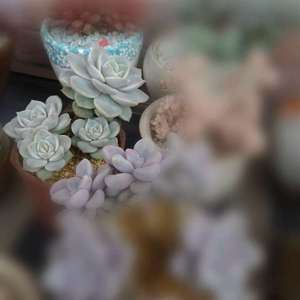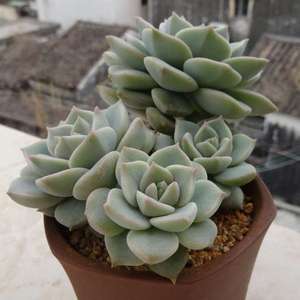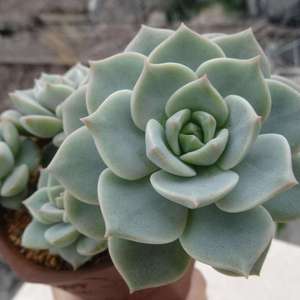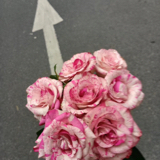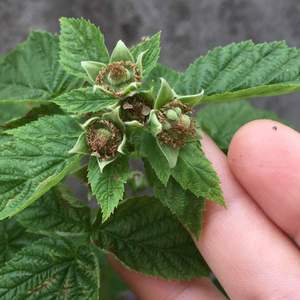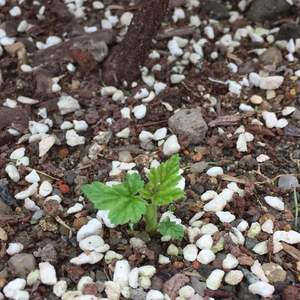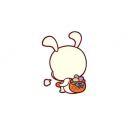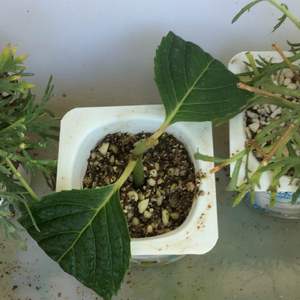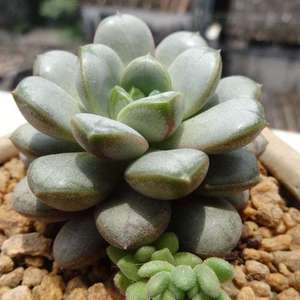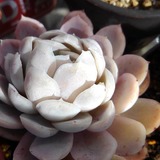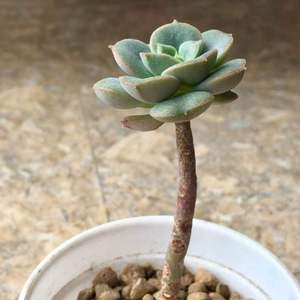文章
Miss Chen
2018年06月07日

Description: This perennial wildflower consists of a rosette of low basal leaves about 4-7" across, from which several flowering stalks develop. The blades of the basal leaves are 1½-3" long and similarly across; in outline, they are oval, orbicular, or orbicular-reniform. Early leaf blades usually lack lobes, while later blades have 3-5 major lobes and sometimes smaller secondary lobes. These palmate lobes are irregular in shape and they usually extend up to one-half of the distance, and sometimes even more, into the interior of a blade. The margins of early leaf blades are finely crenate, while the margins of later blades are smooth, crenate, or dentate. Upper surfaces of the leaf blades are medium to dark green and hairless (or nearly so), while their lower surfaces are light green and usually hairy along the major veins. The petioles of the basal leaves are relatively stout and long (about 2-4" in length), light green to pale purplish green, and either smooth or hairy.
Individual flowers develop from ascending pedicels; the flowers are usually held above or beyond the leaves. The pedicels are either smooth or hairy. Each flower is about ¾-1" across, consisting of 5 spreading blue-violet petals, 5 light green linear-lanceolate sepals, 5 inserted stamens, and a pistil with a single style. The two lateral petals have small tufts of white hairs at their bases, while the bottom petal has several violet veins on a white background that function as guides to the short nectar spur in the back of the flower. These flowers bloom during mid- to late spring for about 3 weeks. Later during the summer, inconspicuous cleistogamous flowers are produced on short pedicels; these flowers are self-fertile. The flowers are replaced by ovoid-oblong seed capsules that split open into 3 sections, ejecting their seeds. The small seeds are globoid and brown. The root system consists of a vertical crown with fibrous roots. This wildflower spreads by reseeding itself.
Cultivation: The preference is partial sun, mesic to dry conditions, and soil that is loamy or rocky. This violet is relatively intolerant of heavy leaf litter and competition from taller ground vegetation.
Range & Habitat: Three-Lobed Violet is a native wildflower that is occasional in the southern half of Illinois, becoming uncommon or absent in the northern half of the state (see Distribution Map). Habitats consist of upland woodlands, rocky open woodlands, wooded slopes, riverbanks, and thinly wooded bluffs. In these habitats, oaks are often dominant as canopy trees. Three-Lobed Violet is usually found in higher quality woodlands where the original ground flora is still intact.
Faunal Associations: The flowers are usually pollinated by bees, including Mason bees (Osmia spp.) and Andrenid bees. One bee species, Andrena violae, is a specialist pollinator of violets. Occasionally, butterflies and ants visit the flowers for nectar; the latter are ineffective at cross-pollination. The foliage and flowers of violets are eaten by several kinds of insects. These insect feeders include the caterpillars of several Fritillary butterflies (Boloria spp., Speyeria spp., & Euptoieta claudia), the caterpillars of the moths Elaphria grata (Grateful Midget) and Eubatha mendica (The Beggar), the thrips Odontothrips pictipennis, the larvae of Ametastegia pallipes (Violet Sawfly), and Neotoxoptera violate (Violet Aphid). The seeds are coated with a substance that is attractive to ants, which help to disperse the seeds into new areas. Violets are a minor source of food to some vertebrate animals. For example, the Wood Turtle (Clemmys insculpta), Eastern Chipmunk, and White-Tailed Deer sometimes eat the foliage, while the Mourning Dove and possibly other birds eat the seeds.
Photographic Location: Along a path on a wooded hill in Lakeview Park near Charleston, Illinois.
Comments: The most unusual characteristic of this violet is the highly variable shape of its leaf blades. Three-Lobed Violet has been considered a separate species in the past (known as Viola triloba), but it is now classified as the typical variety of Viola palmata. It differs from another variety, Viola palmata dilatata, by having leaf blades with either fewer lobes (3-5) or no lobes. The latter variety, referred to here as the Cleft Violet, has leaf blades with 5-9 lobes and it never produces leaves without lobes. Both varieties occupy similar habitats, although the Cleft Violet may prefer habitats that are more rocky and barren.
Individual flowers develop from ascending pedicels; the flowers are usually held above or beyond the leaves. The pedicels are either smooth or hairy. Each flower is about ¾-1" across, consisting of 5 spreading blue-violet petals, 5 light green linear-lanceolate sepals, 5 inserted stamens, and a pistil with a single style. The two lateral petals have small tufts of white hairs at their bases, while the bottom petal has several violet veins on a white background that function as guides to the short nectar spur in the back of the flower. These flowers bloom during mid- to late spring for about 3 weeks. Later during the summer, inconspicuous cleistogamous flowers are produced on short pedicels; these flowers are self-fertile. The flowers are replaced by ovoid-oblong seed capsules that split open into 3 sections, ejecting their seeds. The small seeds are globoid and brown. The root system consists of a vertical crown with fibrous roots. This wildflower spreads by reseeding itself.
Cultivation: The preference is partial sun, mesic to dry conditions, and soil that is loamy or rocky. This violet is relatively intolerant of heavy leaf litter and competition from taller ground vegetation.
Range & Habitat: Three-Lobed Violet is a native wildflower that is occasional in the southern half of Illinois, becoming uncommon or absent in the northern half of the state (see Distribution Map). Habitats consist of upland woodlands, rocky open woodlands, wooded slopes, riverbanks, and thinly wooded bluffs. In these habitats, oaks are often dominant as canopy trees. Three-Lobed Violet is usually found in higher quality woodlands where the original ground flora is still intact.
Faunal Associations: The flowers are usually pollinated by bees, including Mason bees (Osmia spp.) and Andrenid bees. One bee species, Andrena violae, is a specialist pollinator of violets. Occasionally, butterflies and ants visit the flowers for nectar; the latter are ineffective at cross-pollination. The foliage and flowers of violets are eaten by several kinds of insects. These insect feeders include the caterpillars of several Fritillary butterflies (Boloria spp., Speyeria spp., & Euptoieta claudia), the caterpillars of the moths Elaphria grata (Grateful Midget) and Eubatha mendica (The Beggar), the thrips Odontothrips pictipennis, the larvae of Ametastegia pallipes (Violet Sawfly), and Neotoxoptera violate (Violet Aphid). The seeds are coated with a substance that is attractive to ants, which help to disperse the seeds into new areas. Violets are a minor source of food to some vertebrate animals. For example, the Wood Turtle (Clemmys insculpta), Eastern Chipmunk, and White-Tailed Deer sometimes eat the foliage, while the Mourning Dove and possibly other birds eat the seeds.
Photographic Location: Along a path on a wooded hill in Lakeview Park near Charleston, Illinois.
Comments: The most unusual characteristic of this violet is the highly variable shape of its leaf blades. Three-Lobed Violet has been considered a separate species in the past (known as Viola triloba), but it is now classified as the typical variety of Viola palmata. It differs from another variety, Viola palmata dilatata, by having leaf blades with either fewer lobes (3-5) or no lobes. The latter variety, referred to here as the Cleft Violet, has leaf blades with 5-9 lobes and it never produces leaves without lobes. Both varieties occupy similar habitats, although the Cleft Violet may prefer habitats that are more rocky and barren.
0
0
文章
Miss Chen
2018年06月05日

Description: This perennial wildflower consists of a low rosette of basal leaves spanning about 4-6" across, from which stalks of flowers develop directly from the crown. The blades of the basal leaves are up to 2½" long and across; for var. dilatata, they are usually divided into 5-7 palmate lobes. These lobes are finger-like in shape, somewhat variable in size, and extend up to half-way into the blade. Some of the larger lobes may be subdivided into smaller lobes, and the margins of the leaf blade may have a few dentate teeth. The upper surface of each leaf blade is medium to dark green and hairless, while the lower surface is light green and hairy along the veins. The petiole of each leaf is about as long as the blade and rather stout; it is conspicuously hairy on the lower side. Individual flowers about ¾–1" across are borne at the apex of ascending stalks that are as long or longer than the leaves.
Each flower has 5 spreading petals that are deep blue-violet (2 upper, 2 lateral, and 1 lower), and 5 sepals that are light green to purple. The 2 lateral petals have dense white hairs (or beards) near the throat of the flower, while the lower petal has a conspicuous patch of white with blue-violet veins. These petals converge into a short nectar spur that is surrounded by the sepals. The sepals are lanceolate-ovate and pubescent. The stalk of each flower is densely covered with spreading white hairs; it is light green to deep purple, and nods downward at the apex where the flower occurs. The blooming period occurs during mid-spring to late spring and lasts about 2-3 weeks. During the summer, inconspicuous flowers are produced that are self-fertile; they are not pollinated by insects, unlike the spring flowers. Each fertile flower is replaced by an oblongoid capsule containing many small brown seeds. When it is ripe, this capsule divides into 3 parts, mechanically ejecting the seeds several inches or feet from the mother plant. The rootstock consists of a short stout crown with fibrous roots underneath.

Cultivation: The preference is dappled sunlight during the spring, followed by partial sun or light shade during the summer. The basal leaves die down during the fall. The soil should contain some loam and be well-drained; some rocky or gritty material is also tolerated. This plant dislikes competition from taller ground vegetation.
Range & Habitat: This variety of Cleft Violet is uncommon in the southern two-thirds of Illinois, while in the rest of the state it is rare or absent (see Distribution Map). Local populations tend to be widely scattered from each other. Habitats include dry rocky woodlands, wooded upper slopes, and thinly wooded bluffs. Oak trees are often present at these habitats. The Cleft Violet is normally found in higher quality woodlands where the original ground flora is intact.

Faunal Associations: The flower nectar of violets attracts various bees (Andrenid bees, Mason bees, etc.), bee flies (Bombylius spp.), butterflies, and skippers. The caterpillars of several Fritillary butterflies and miscellaneous moths feed on the foliage of violets (see the Butterfly & Moth Table), as do the caterpillars of Ametastegia pallipes (Violet Sawfly), which skeletonize the leaves. The insect Odontothrips pictipennis (Thrips sp.) sucks juices from violets. The leaves and stems of violets are eaten to a limited extent by the Cottontail Rabbit, Eastern Chipmunk, Wild Turkey, and Ruffed Grouse; the seeds are eaten by the Slate-Colored Junco.
Photographic Location: The wildflower garden of the webmaster in Urbana, Illinois.

Comments: This variety of Cleft Violet is one of several violets with lobed leaves. In general, it is less deeply lobed than Viola pedata (Bird's Foot Violet) and Viola pedatifida (Prairie Violet), but more strongly lobed than Viola sagittata (Arrow-Leaved Violet) and Viola fimbriatula (Sand Violet). Even for a single plant of Cleft Violet, there can be significant variation on the number of lobes and their depth for each leaf. The flowers of this species are quite similar in appearance to those of other violets with blue-violet petals. Other common names of Viola palmata are Early Blue Violet and Blue Wood Violet. A scientific synonym for this species is Viola triloba dilatata. Where their ranges overlap, this variety of Cleft Violet may intergrade with the typical variety; the latter has fewer lobes on its leaves (usually 3 or none).
Each flower has 5 spreading petals that are deep blue-violet (2 upper, 2 lateral, and 1 lower), and 5 sepals that are light green to purple. The 2 lateral petals have dense white hairs (or beards) near the throat of the flower, while the lower petal has a conspicuous patch of white with blue-violet veins. These petals converge into a short nectar spur that is surrounded by the sepals. The sepals are lanceolate-ovate and pubescent. The stalk of each flower is densely covered with spreading white hairs; it is light green to deep purple, and nods downward at the apex where the flower occurs. The blooming period occurs during mid-spring to late spring and lasts about 2-3 weeks. During the summer, inconspicuous flowers are produced that are self-fertile; they are not pollinated by insects, unlike the spring flowers. Each fertile flower is replaced by an oblongoid capsule containing many small brown seeds. When it is ripe, this capsule divides into 3 parts, mechanically ejecting the seeds several inches or feet from the mother plant. The rootstock consists of a short stout crown with fibrous roots underneath.

Cultivation: The preference is dappled sunlight during the spring, followed by partial sun or light shade during the summer. The basal leaves die down during the fall. The soil should contain some loam and be well-drained; some rocky or gritty material is also tolerated. This plant dislikes competition from taller ground vegetation.
Range & Habitat: This variety of Cleft Violet is uncommon in the southern two-thirds of Illinois, while in the rest of the state it is rare or absent (see Distribution Map). Local populations tend to be widely scattered from each other. Habitats include dry rocky woodlands, wooded upper slopes, and thinly wooded bluffs. Oak trees are often present at these habitats. The Cleft Violet is normally found in higher quality woodlands where the original ground flora is intact.

Faunal Associations: The flower nectar of violets attracts various bees (Andrenid bees, Mason bees, etc.), bee flies (Bombylius spp.), butterflies, and skippers. The caterpillars of several Fritillary butterflies and miscellaneous moths feed on the foliage of violets (see the Butterfly & Moth Table), as do the caterpillars of Ametastegia pallipes (Violet Sawfly), which skeletonize the leaves. The insect Odontothrips pictipennis (Thrips sp.) sucks juices from violets. The leaves and stems of violets are eaten to a limited extent by the Cottontail Rabbit, Eastern Chipmunk, Wild Turkey, and Ruffed Grouse; the seeds are eaten by the Slate-Colored Junco.
Photographic Location: The wildflower garden of the webmaster in Urbana, Illinois.

Comments: This variety of Cleft Violet is one of several violets with lobed leaves. In general, it is less deeply lobed than Viola pedata (Bird's Foot Violet) and Viola pedatifida (Prairie Violet), but more strongly lobed than Viola sagittata (Arrow-Leaved Violet) and Viola fimbriatula (Sand Violet). Even for a single plant of Cleft Violet, there can be significant variation on the number of lobes and their depth for each leaf. The flowers of this species are quite similar in appearance to those of other violets with blue-violet petals. Other common names of Viola palmata are Early Blue Violet and Blue Wood Violet. A scientific synonym for this species is Viola triloba dilatata. Where their ranges overlap, this variety of Cleft Violet may intergrade with the typical variety; the latter has fewer lobes on its leaves (usually 3 or none).
0
0
文章
Miss Chen
2018年06月05日

Description: This perennial wildflower is 4-8" in length (or longer), consisting of leafy stems with axillary flowers and seed capsules. The stems are light green and glabrous. The blades of alternate leaves are about 1-2½" long and ¾-1½" across; they are oval-cordate in shape and serrate-crenate along their margins. The base of each leaf blade is indented, while its tip is well-rounded to somewhat pointed. The upper blade surface is medium to dark green and glabrous, while the lower surface to light to medium green and glabrous. The slender petioles are about the same length as the leaf blades or shorter; they are light green and glabrous. At the base of each petiole, there is a pair of stipules up to ½" long. These stipules are linear-lanceolate in shape and coarsely toothed along their margins. Individual flowers develop from the axils of the leaves on slender pedicels about 1½-3" long; the flowers are usually held above the leaves. The pedicels are light green and glabrous; there is a pair of small linear bracts toward the middle of each pedicel.
Individual flowers are ½-¾" across, consisting of 5 pale blue-violet petals, 5 green sepals, and the reproductive organs. The style of each flower is bent downward at its tip, where it is not swollen. Dark blue-violet veins radiate away from the throat of each flower across the petals; the two lateral petals have tufts of white hair (or beards) toward their bases. The lower petal has a relatively long nectar spur about ¼" long; this spur is sometimes visible when the flower is viewed from the front (behind the upper 2 petals). The nectar spur is relatively stout and either straight or slightly hooked. The sepals are linear-lanceolate, sometimes toothed toward their bases, and hairless. The blooming period occurs during the middle of spring for about 1 month. Fertilized flowers produce an ovoid-oblongoid seed capsule about 1/3" long. This capsule splits open into 3 parts to fling the seeds from the mother plant. This wildflower also produces inconspicuous cleistogamous flowers during the summer, which are self-fertile; their seed capsules are similar to the earlier fertilized flowers. The small seeds are globoid in shape and light brown at maturity. The root system consists of a vertical crown with fibrous roots and horizontal rhizomes; clonal offsets are produced occasionally from the rhizomes.

Cultivation: During the spring, the preference is dappled sunlight to light shade, moist conditions, and a rich loamy soil with abundant organic material. Later in the year, more shade is tolerated.
Range & Habitat: The native Dog Violet is found primarily in NE Illinois (see Distribution Map). This wildflower is considered rare and it is state-listed as 'threatened.' Habitats include moist rich woodlands, swampy woodlands, and moist meadows in wooded areas. Sometimes this violet is found in slightly sandy habitats that are similar to the preceding ones. Dominant canopy trees in these habitats are typically ash, maple, or elm. Dog Violet is found in higher quality habitats where the original ground flora is still intact.

Faunal Associations: In this section, information about floral-faunal relationships applies to Viola spp. (Violets) in general. The flowers of violets are cross-pollinated primarily by various bees, including honeybees, bumblebees, Mason bees (Osmia spp.), Little Carpenter bees (Ceratina spp.), digger bees (Synhalonia spp.), Halictid bees, and Andrenid bees. One bee species, Andrena violae (Violet Andrenid Bee), is a specialist pollinator of violets. Other floral visitors include bee flies (Bombylius spp.), small butterflies, skippers, and ants. Most of these insects suck nectar from the flowers, although some of the bees also collect pollen. Other insects feed on the foliage and other parts of violets. These insect feeders include the caterpillars of several Fritillary butterflies (Euptoieta claudia, Boloria spp., Speyeria spp.) and the caterpillars of several moths, including Elaphria grata (Grateful Midget), Eubaphe mendica (The Beggar), and Apantesis nais (Nais Tiger Moth). Other insect feeders include the thrips Odontothrips pictipennis, the aphid Neotoxoptera violae, and the larvae of Ametastegia pallipes (Violet Sawfly). Vertebrate animals feed on violets only to a limited extent. The White-Tailed Deer, Cottontail Rabbit, and Wood Turtle (Clemmys insculpta) sometimes browse on the foliage, while the White-Footed Mouse eats the seeds. Birds that feed on violets include the Mourning Dove (seeds), Ruffed Grouse (seed capsules, foliage), and Wild Turkey (seed capsules, rhizomes).

Photographic Location: A damp area of Goll Woods in NW Ohio, and a swampy woodland at the Indiana Dunes National Lakeshore in NW Indiana.
Comments: This interesting species belongs to a small group of violets with blue-violet flowers, nectar spurs of above average length, and flowering leafy stems (as opposed to violets with basal leaves and flowers on separate non-leafy stalks). Aside from the Dog Violet, other species in this group include Viola labradorica (Alpine Violet), Viola adunca (Hook-Spurred Violet), and Viola walteri (Walter's Violet). While the Dog Violet has pale blue-violet flowers, these other violets often have medium to dark blue-violet flowers (among other minor differences). The Alpine Violet and Hook-Spurred Violet have a more northern boreal distribution, while Walter's Violet is more southern and Appalachian. None of these three species have been found in Illinois. Some authorities have proposed reducing the status of the Dog Violet to a variety of either the Alpine Violet or the Hook-Spurred Violet.
Individual flowers are ½-¾" across, consisting of 5 pale blue-violet petals, 5 green sepals, and the reproductive organs. The style of each flower is bent downward at its tip, where it is not swollen. Dark blue-violet veins radiate away from the throat of each flower across the petals; the two lateral petals have tufts of white hair (or beards) toward their bases. The lower petal has a relatively long nectar spur about ¼" long; this spur is sometimes visible when the flower is viewed from the front (behind the upper 2 petals). The nectar spur is relatively stout and either straight or slightly hooked. The sepals are linear-lanceolate, sometimes toothed toward their bases, and hairless. The blooming period occurs during the middle of spring for about 1 month. Fertilized flowers produce an ovoid-oblongoid seed capsule about 1/3" long. This capsule splits open into 3 parts to fling the seeds from the mother plant. This wildflower also produces inconspicuous cleistogamous flowers during the summer, which are self-fertile; their seed capsules are similar to the earlier fertilized flowers. The small seeds are globoid in shape and light brown at maturity. The root system consists of a vertical crown with fibrous roots and horizontal rhizomes; clonal offsets are produced occasionally from the rhizomes.

Cultivation: During the spring, the preference is dappled sunlight to light shade, moist conditions, and a rich loamy soil with abundant organic material. Later in the year, more shade is tolerated.
Range & Habitat: The native Dog Violet is found primarily in NE Illinois (see Distribution Map). This wildflower is considered rare and it is state-listed as 'threatened.' Habitats include moist rich woodlands, swampy woodlands, and moist meadows in wooded areas. Sometimes this violet is found in slightly sandy habitats that are similar to the preceding ones. Dominant canopy trees in these habitats are typically ash, maple, or elm. Dog Violet is found in higher quality habitats where the original ground flora is still intact.

Faunal Associations: In this section, information about floral-faunal relationships applies to Viola spp. (Violets) in general. The flowers of violets are cross-pollinated primarily by various bees, including honeybees, bumblebees, Mason bees (Osmia spp.), Little Carpenter bees (Ceratina spp.), digger bees (Synhalonia spp.), Halictid bees, and Andrenid bees. One bee species, Andrena violae (Violet Andrenid Bee), is a specialist pollinator of violets. Other floral visitors include bee flies (Bombylius spp.), small butterflies, skippers, and ants. Most of these insects suck nectar from the flowers, although some of the bees also collect pollen. Other insects feed on the foliage and other parts of violets. These insect feeders include the caterpillars of several Fritillary butterflies (Euptoieta claudia, Boloria spp., Speyeria spp.) and the caterpillars of several moths, including Elaphria grata (Grateful Midget), Eubaphe mendica (The Beggar), and Apantesis nais (Nais Tiger Moth). Other insect feeders include the thrips Odontothrips pictipennis, the aphid Neotoxoptera violae, and the larvae of Ametastegia pallipes (Violet Sawfly). Vertebrate animals feed on violets only to a limited extent. The White-Tailed Deer, Cottontail Rabbit, and Wood Turtle (Clemmys insculpta) sometimes browse on the foliage, while the White-Footed Mouse eats the seeds. Birds that feed on violets include the Mourning Dove (seeds), Ruffed Grouse (seed capsules, foliage), and Wild Turkey (seed capsules, rhizomes).

Photographic Location: A damp area of Goll Woods in NW Ohio, and a swampy woodland at the Indiana Dunes National Lakeshore in NW Indiana.
Comments: This interesting species belongs to a small group of violets with blue-violet flowers, nectar spurs of above average length, and flowering leafy stems (as opposed to violets with basal leaves and flowers on separate non-leafy stalks). Aside from the Dog Violet, other species in this group include Viola labradorica (Alpine Violet), Viola adunca (Hook-Spurred Violet), and Viola walteri (Walter's Violet). While the Dog Violet has pale blue-violet flowers, these other violets often have medium to dark blue-violet flowers (among other minor differences). The Alpine Violet and Hook-Spurred Violet have a more northern boreal distribution, while Walter's Violet is more southern and Appalachian. None of these three species have been found in Illinois. Some authorities have proposed reducing the status of the Dog Violet to a variety of either the Alpine Violet or the Hook-Spurred Violet.
0
0
文章
Miss Chen
2018年06月05日

Description: This perennial wildflower is 6-14" tall, producing both basal and cauline leaves. The blades of both basal and cauline leaves are up to 4" long and 2½" across; they are medium to dark green, cordate or oval-cordate, palmately veined, and slightly crenate along their margins. The upper surfaces of the blades are hairless. For the typical variety of Canada Violet, the lower surfaces of the blades are largely hairless, except for fine hairs along the major veins. For var. rugulosa, these lower surfaces are more hairy. Basal leaves have longer petioles than cauline leaves. The flowering plants produce stems with alternate leaves. These stems are light green, somewhat angular, and sometimes finely pubescent. At the base of the petioles of each alternate leaf, there is a pair of linear-lanceolate stipules up to 1/3" (8 mm.) long; these stipules lack teeth.
Individual flowers are produced from the axils of the alternate leaves. The slender pedicels raise the flowers only a little above the foliage. Each flower is ½–¾" across, consisting of 5 white petals, 5 light green sepals, and a short nectar spur; the petals are much larger than the sepals. The reproductive organs are largely hidden within the throat of the flower. The lower petal has dark purple veins, while the two lateral petals have such veins to a lesser extent. The two lateral petals also have small tufts of hairs near the throat of the flower, where there is a conspicuous yellow patch. The back sides of the petals are light purple. The blooming period occurs from mid-spring to early summer and sometimes during the fall. Usually, only a few flowers are in bloom at the same time. Later in the summer, inconspicuous cleistogamous flowers are produced, which are self-fertile. Each fertile flower is replaced by an ovoid seed capsule up to ½" long. This capsule is initially green, but it later turns brown and divides into 3 segments, flinging the seeds. The root system is fibrous and either rhizomatous or stoloniferous. Colonies of plants are often produced.

Cultivation: This violet prefers dappled sunlight to light shade during the spring, but tolerates greater shade during the summer. Other cultural requirements include more or less mesic conditions, a rich soil containing loam and decaying organic matter, and cool summer temperatures.
Range & Habitat: Canada Violet is a rare wildflower that is restricted to the northern two tiers of counties in Illinois (see Distribution Map). It is state-listed as "endangered." It is native to the driftless area of NW Illinois, while populations in NE Illinois may be descendants of plants that have escaped cultivation. Habitats include mesic deciduous woodlands and bluffs. Canada Violet is normally found in high quality woodlands, although escaped cultivated plants are likely to appear in more disturbed areas.
Faunal Associations: The nectar and pollen of the flowers attract primarily bees, including bumblebees, Little Carpenter bees (Ceratina spp.), digger bees (Synhalonia spp.), Mason bees (Osmia spp.), and Andrenid bees. The Andrenid bee, Andrena violae, is an oligolectic visitor of violet flowers. Other floral visitors include bee flies and occasional skippers and butterflies. These latter insects seek nectar. The larvae of many moths and butterflies feed on the foliage of violets (see Lepidoptera Table). These larvae often hide during the day, but come out at night to feed. Other insects that feed on violets include Neotoxoptera violae (Violet Aphid), the larvae of Ametastegia pallipes (Violet Sawfly), and Odontothrips pictipennis (Thrips sp.). Among vertebrate animals, the Ruffed Grouse and Wild Turkey eat the seeds and fleshy roots. Other animals that occasionally feed on violets in wooded areas include the White-Tailed Deer (foliage), Eastern Chipmunk (stems & leaves), White-Footed Mouse (seeds), and Wood Turtle (Clemmys insculpta). However, the importance of violets as a food source to vertebrate animals is relatively low.
Photographic Location: Bob Vaiden's wildflower garden in Urbana, Illinois.

Comments: Canada Violet is somewhat similar in appearance to Viola striata (Cream Violet). It differs from the latter by the yellow patch at the throat of its flowers, petals with pale purple backsides, and toothless stipules. Other white-flowered violets in the Midwest are stemless; they produce both flowers and leaves from the crown of the root system. The leaves of Canada Violet have tips that are more slender and elongated than those of most other violets, regardless of the color of their flowers. Both the flowers and foliage are attractive.
Individual flowers are produced from the axils of the alternate leaves. The slender pedicels raise the flowers only a little above the foliage. Each flower is ½–¾" across, consisting of 5 white petals, 5 light green sepals, and a short nectar spur; the petals are much larger than the sepals. The reproductive organs are largely hidden within the throat of the flower. The lower petal has dark purple veins, while the two lateral petals have such veins to a lesser extent. The two lateral petals also have small tufts of hairs near the throat of the flower, where there is a conspicuous yellow patch. The back sides of the petals are light purple. The blooming period occurs from mid-spring to early summer and sometimes during the fall. Usually, only a few flowers are in bloom at the same time. Later in the summer, inconspicuous cleistogamous flowers are produced, which are self-fertile. Each fertile flower is replaced by an ovoid seed capsule up to ½" long. This capsule is initially green, but it later turns brown and divides into 3 segments, flinging the seeds. The root system is fibrous and either rhizomatous or stoloniferous. Colonies of plants are often produced.

Cultivation: This violet prefers dappled sunlight to light shade during the spring, but tolerates greater shade during the summer. Other cultural requirements include more or less mesic conditions, a rich soil containing loam and decaying organic matter, and cool summer temperatures.
Range & Habitat: Canada Violet is a rare wildflower that is restricted to the northern two tiers of counties in Illinois (see Distribution Map). It is state-listed as "endangered." It is native to the driftless area of NW Illinois, while populations in NE Illinois may be descendants of plants that have escaped cultivation. Habitats include mesic deciduous woodlands and bluffs. Canada Violet is normally found in high quality woodlands, although escaped cultivated plants are likely to appear in more disturbed areas.
Faunal Associations: The nectar and pollen of the flowers attract primarily bees, including bumblebees, Little Carpenter bees (Ceratina spp.), digger bees (Synhalonia spp.), Mason bees (Osmia spp.), and Andrenid bees. The Andrenid bee, Andrena violae, is an oligolectic visitor of violet flowers. Other floral visitors include bee flies and occasional skippers and butterflies. These latter insects seek nectar. The larvae of many moths and butterflies feed on the foliage of violets (see Lepidoptera Table). These larvae often hide during the day, but come out at night to feed. Other insects that feed on violets include Neotoxoptera violae (Violet Aphid), the larvae of Ametastegia pallipes (Violet Sawfly), and Odontothrips pictipennis (Thrips sp.). Among vertebrate animals, the Ruffed Grouse and Wild Turkey eat the seeds and fleshy roots. Other animals that occasionally feed on violets in wooded areas include the White-Tailed Deer (foliage), Eastern Chipmunk (stems & leaves), White-Footed Mouse (seeds), and Wood Turtle (Clemmys insculpta). However, the importance of violets as a food source to vertebrate animals is relatively low.
Photographic Location: Bob Vaiden's wildflower garden in Urbana, Illinois.

Comments: Canada Violet is somewhat similar in appearance to Viola striata (Cream Violet). It differs from the latter by the yellow patch at the throat of its flowers, petals with pale purple backsides, and toothless stipules. Other white-flowered violets in the Midwest are stemless; they produce both flowers and leaves from the crown of the root system. The leaves of Canada Violet have tips that are more slender and elongated than those of most other violets, regardless of the color of their flowers. Both the flowers and foliage are attractive.
0
0
文章
Miss Chen
2018年06月04日

Description: This perennial wildflower is 2-4' tall and unbranched. The central stem is light green, terete, and covered with spreading white hairs that are non-glandular. Pairs of opposite leaves occur at intervals along this stem; each pair of leaves rotates 90º from the orientation of the preceding pair of leaves. Each leaf is up to 8" long and 3½" across, narrowly ovate to ovate in shape, and smooth along its margins, tapering to a narrow sessile base. The upper surface of each leaf is dull green to dull reddish green, while its lower surface is whitish green and covered with short fine pubescence. Flowers occur individually in the axils of the leaves. Each flower has a narrow tubular corolla that is reddish brown and about ½-¾" long. The corolla has 5 lobes that are short and well-rounded. The 5 sepals are about the same length as the corolla and linear in shape; they are green to dark reddish brown. At the base of the flower, there is a 3-celled ovary that is green and hairy; there is also a pair bracts that resemble the sepals, except they are smaller in size. The style is about the same length or slightly exerted from the corolla; it has a knobby green stigma. The 5 stamens are hidden with the corolla.
The blooming period occurs from late spring to early summer and lasts about 1-2 months. Each flower is replaced by a dry drupe about ½" long that is globoid-ovoid in shape and becomes orange or orange-red at maturity. Inside each drupe, there are 3 black nutlets that are 3-angled and oblongoid in shape. The root system consists of a taproot. This wildflower spreads by reseeding itself.
Cultivation: The preference is light shade to dappled sunlight, mesic to slightly dry conditions, and a loamy or rocky soil with abundant organic matter.
Range & Habitat: Illinois Horse Gentian is occasional in most areas of the state (see Distribution Map), where it is native. Habitats include upland deciduous woodlands, rocky wooded slopes, and thinly wooded bluffs. Rarely is this species found in prairies.
Faunal Associations: The nectar of the flowers attracts long-tongued bees, especially bumblebees (Bombus spp.) and Anthophorid bees (Anthophora spp.). Smaller short-tongued bees may visit the flowers, but they are less effective at cross-pollination. The caterpillars of the moth Hemaris diffinis (Snowberry Clearwing) feed on Triosteum spp. (Horse Gentians) and other members of the Honeysuckle family.

Photographic Location: A wooded slope near Charleston, Illinois.
Comments: In spite of the common name, this wildflower is not a gentian (a member of the Gentianaceae); it is more closely related to the honeysuckles. Illinois Horse Gentian differs from the typical variety of Triosteum aurantiacum by the long non-glandular hairs along its stem; the typical variety has some glandular hairs along its stem that are often shorter. Some taxonomic botanists in Illinois consider Illinois Horse Gentian to be a separate species, Triosteum illinoense; however, this reclassification hasn't gained much acceptance from taxonomic botanists outside of the state. Another similar species, Triosteum perfoliatum (Perfoliate Horse Gentian), has opposite leaves that are joined together at the base and surround the stem; the opposite leaves of Illinois Horse Gentian are sessile and remain distinct.
The blooming period occurs from late spring to early summer and lasts about 1-2 months. Each flower is replaced by a dry drupe about ½" long that is globoid-ovoid in shape and becomes orange or orange-red at maturity. Inside each drupe, there are 3 black nutlets that are 3-angled and oblongoid in shape. The root system consists of a taproot. This wildflower spreads by reseeding itself.
Cultivation: The preference is light shade to dappled sunlight, mesic to slightly dry conditions, and a loamy or rocky soil with abundant organic matter.
Range & Habitat: Illinois Horse Gentian is occasional in most areas of the state (see Distribution Map), where it is native. Habitats include upland deciduous woodlands, rocky wooded slopes, and thinly wooded bluffs. Rarely is this species found in prairies.
Faunal Associations: The nectar of the flowers attracts long-tongued bees, especially bumblebees (Bombus spp.) and Anthophorid bees (Anthophora spp.). Smaller short-tongued bees may visit the flowers, but they are less effective at cross-pollination. The caterpillars of the moth Hemaris diffinis (Snowberry Clearwing) feed on Triosteum spp. (Horse Gentians) and other members of the Honeysuckle family.

Photographic Location: A wooded slope near Charleston, Illinois.
Comments: In spite of the common name, this wildflower is not a gentian (a member of the Gentianaceae); it is more closely related to the honeysuckles. Illinois Horse Gentian differs from the typical variety of Triosteum aurantiacum by the long non-glandular hairs along its stem; the typical variety has some glandular hairs along its stem that are often shorter. Some taxonomic botanists in Illinois consider Illinois Horse Gentian to be a separate species, Triosteum illinoense; however, this reclassification hasn't gained much acceptance from taxonomic botanists outside of the state. Another similar species, Triosteum perfoliatum (Perfoliate Horse Gentian), has opposite leaves that are joined together at the base and surround the stem; the opposite leaves of Illinois Horse Gentian are sessile and remain distinct.
0
0
文章
Miss Chen
2018年05月29日

Description: This herbaceous wildflower is 5-12" tall, consisting of a single stem and a whorl of 3 spreading leaves at its apex. The central stem is purplish green or maroon, terete, glabrous, and rather stout. Individual leaves are 3-4" long and 2-3½" across; they are ovate or oval, smooth along their margins, sessile, glabrous, and parallel-veined. The upper leaf surface is medium green or mottled green (a mixture of both light green and medium green). The leaf bases are rounded and their tips are usually blunt.
On a mature plant, a single sessile flower develops on top of the whorl of leaves. Individual flowers consist of 3 dark maroon petals about ¾-1¼" long (rarely greenish yellow or brown), 3 green or purplish green sepals about ½-1" long, 6 stamens about ½-¾" long, and an angular superior ovary with 3 recurved stigmata at its apex. The erect petals are narrowly elliptic to elliptic in shape. The sepals are narrowly lanceolate and widely spreading to slightly ascending; they lie above the plane of the leaves. The anthers have dark maroon and yellow stripes; they are much longer than the filaments. The blooming period occurs from mid- to late spring, lasting about 3 weeks. The flowers usually have a slight aroma of rotting meat. Each flower is replace by a dry 3-celled fruit that is whitish to purplish green. The fruit splits open to release the seeds. The root system consists of a stout rhizome and secondary fibrous roots. Clonal offsets occasionally develop from the rhizome.Distribution Map
Cultivation: The preference is dappled sunlight to light shade during the spring; during the summer, more shade is tolerated. The soil should be moist, rich, and loamy with abundant organic matter (decaying leaves, etc.). This wildflower develops slowly from seed, requiring several years to reach maturity. The seeds should be kept moist and planted as soon as possible; they are often slow to germinate. It is also possible to start plants from clonal offsets.
Range & Habitat: The native Sessile Trillium is found primarily in NE and southern Illinois, where it is uncommon. It is more common further to the east. Habitats include rich mesic woodlands, floodplain woodlands in valleys, lower slopes of shady ravines, and swamps. These habitats are dominated by such deciduous canopy trees as Sugar Maple, American Beech, American Basswood, and Green Ash. In Illinois, Sessile Trillium occurs in high quality woodlands where the original ground flora is still intact.
Faunal Associations: Robertson (1929) observed a small weevil, Centrinites strigicollis, visiting the flowers for pollen. Because of the malodorous odor and color of the petals, the flowers are probably visited by beetles and flies that are attracted to rotting flesh. The polyphagous caterpillars of two moths, Clepsis melaleucana (Black-Patched Clepsis) and Euplexia benesimilis (American Angle Shades), have been observed to feed on trilliums. The seeds are distributed by ants (and possibly some beetles), which are attracted to their elaisomes (food appendages). White-Tailed Deer readily browse on the foliage of trilliums, although Sessile Trillium may be eaten less often than some trillium species because of its dark-colored and less conspicuous flowers.
Photographic Location: A soggy area of Goff Woods Nature Preserve in NW Ohio. This woodlands is a small remnant of what was once called the 'Great Black Swamp,' which covered large areas of NW Ohio and NE Indiana.

Comments: In many ways, Sessile Trillium resembles the more common Prairie Trillium (Trillium recurvatum), which is also found in wooded habitats in Illinois. Sessile Trillium can be distinguished from the latter species by its sessile rounded leaves and widely spreading or ascending sepals, which are held above the leaves. In contrast, the leaves of Prairie Trillium taper gradually into petioles and the sepals of its flowers hang downward below the leaves. Both Sessile Trillium and Prairie Trillium can have flowers with greenish yellow petals, but this is rather uncommon. Other trilliums in Illinois have petals that are never colored dark maroon, or their flowers have conspicuous pedicels (flowering stalks). Other common names of Trillium sessile are Toadshade and Wake Robin.
On a mature plant, a single sessile flower develops on top of the whorl of leaves. Individual flowers consist of 3 dark maroon petals about ¾-1¼" long (rarely greenish yellow or brown), 3 green or purplish green sepals about ½-1" long, 6 stamens about ½-¾" long, and an angular superior ovary with 3 recurved stigmata at its apex. The erect petals are narrowly elliptic to elliptic in shape. The sepals are narrowly lanceolate and widely spreading to slightly ascending; they lie above the plane of the leaves. The anthers have dark maroon and yellow stripes; they are much longer than the filaments. The blooming period occurs from mid- to late spring, lasting about 3 weeks. The flowers usually have a slight aroma of rotting meat. Each flower is replace by a dry 3-celled fruit that is whitish to purplish green. The fruit splits open to release the seeds. The root system consists of a stout rhizome and secondary fibrous roots. Clonal offsets occasionally develop from the rhizome.Distribution Map
Cultivation: The preference is dappled sunlight to light shade during the spring; during the summer, more shade is tolerated. The soil should be moist, rich, and loamy with abundant organic matter (decaying leaves, etc.). This wildflower develops slowly from seed, requiring several years to reach maturity. The seeds should be kept moist and planted as soon as possible; they are often slow to germinate. It is also possible to start plants from clonal offsets.
Range & Habitat: The native Sessile Trillium is found primarily in NE and southern Illinois, where it is uncommon. It is more common further to the east. Habitats include rich mesic woodlands, floodplain woodlands in valleys, lower slopes of shady ravines, and swamps. These habitats are dominated by such deciduous canopy trees as Sugar Maple, American Beech, American Basswood, and Green Ash. In Illinois, Sessile Trillium occurs in high quality woodlands where the original ground flora is still intact.
Faunal Associations: Robertson (1929) observed a small weevil, Centrinites strigicollis, visiting the flowers for pollen. Because of the malodorous odor and color of the petals, the flowers are probably visited by beetles and flies that are attracted to rotting flesh. The polyphagous caterpillars of two moths, Clepsis melaleucana (Black-Patched Clepsis) and Euplexia benesimilis (American Angle Shades), have been observed to feed on trilliums. The seeds are distributed by ants (and possibly some beetles), which are attracted to their elaisomes (food appendages). White-Tailed Deer readily browse on the foliage of trilliums, although Sessile Trillium may be eaten less often than some trillium species because of its dark-colored and less conspicuous flowers.
Photographic Location: A soggy area of Goff Woods Nature Preserve in NW Ohio. This woodlands is a small remnant of what was once called the 'Great Black Swamp,' which covered large areas of NW Ohio and NE Indiana.

Comments: In many ways, Sessile Trillium resembles the more common Prairie Trillium (Trillium recurvatum), which is also found in wooded habitats in Illinois. Sessile Trillium can be distinguished from the latter species by its sessile rounded leaves and widely spreading or ascending sepals, which are held above the leaves. In contrast, the leaves of Prairie Trillium taper gradually into petioles and the sepals of its flowers hang downward below the leaves. Both Sessile Trillium and Prairie Trillium can have flowers with greenish yellow petals, but this is rather uncommon. Other trilliums in Illinois have petals that are never colored dark maroon, or their flowers have conspicuous pedicels (flowering stalks). Other common names of Trillium sessile are Toadshade and Wake Robin.
0
0





